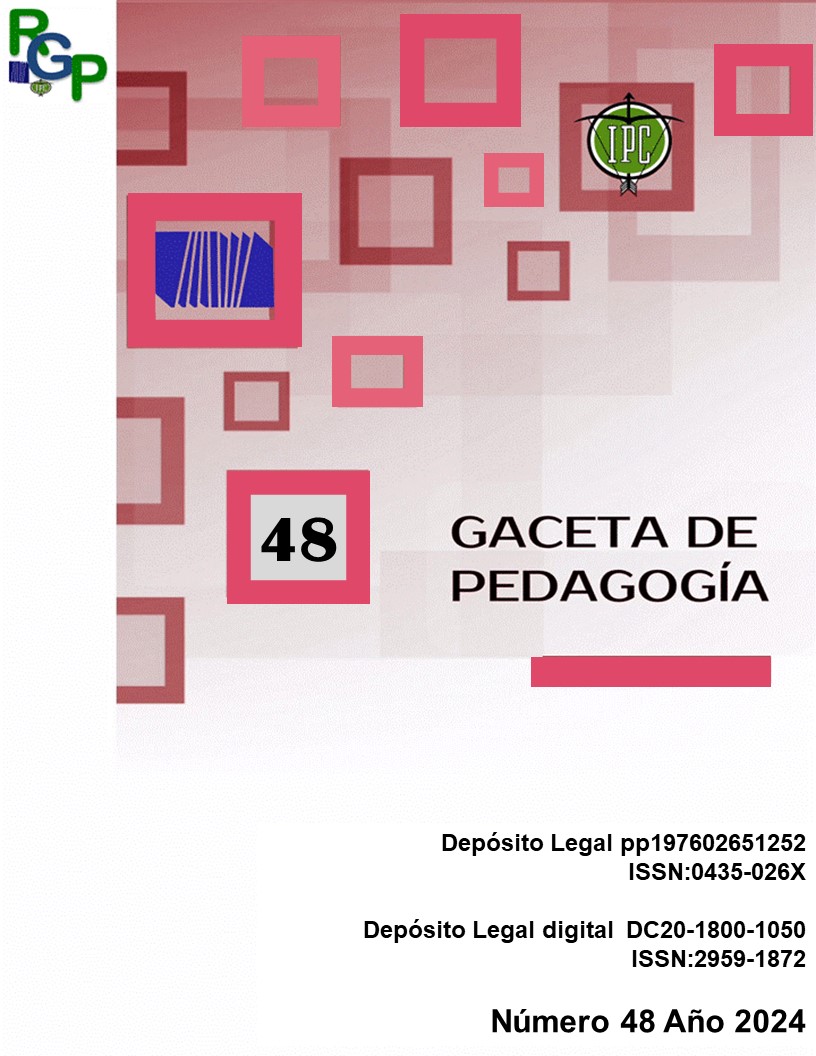Education in the age of climate change and the risk of mass extinction
DOI:
https://doi.org/10.56219/rgp.vi48.2442Keywords:
Global warming, Mass extinction, Environmental education, Environmental pollution, Sustainable developmentAbstract
Humanity is facing serious environmental problems of its own making that may lead to mass extinction, with a million species at risk according to the UN. The purpose of this research was to determine how education can contribute to the solution of environmental problems. It was an exploratory research, in which surveys with open and closed questions were applied to 5 education professionals with knowledge of the most important environmental problems such as climate change, environmental pollution, hunger and thirst, loss of biodiversity, war, violence, and coastal erosion and flooding caused by rising sea levels, to categorize them by importance, their possible impact, the urgency of facing them and evaluate whether education develops in students the knowledge and skills to solve them, the most urgent and those with the greatest impact. Respondents stated that students are not developing the skills, ethics and values necessary to reverse the environmental situation, so education should be directed towards sustainable development and environmental recovery.
References
Andrade, G. (2019). la pérdida de la biodiversidad y los ODS. Centro de los Objetivos de Desarrollo Sostenible para America Latina: https://acortar.link/Zo7MR9
AvatarEnergía. (s.f.). Impacto ambiental de la producción de amoníaco. https://www.avatarenergia.com/impacto-ambiental-de-la-produccion-de-amoniaco/
Benyus, J. (s.f.). Biomímesis o biomimética: Imprescindible en cualquier proceso de innovación. Simbiotia: https://www.simbiotia.com/biomimesis/
Coneo Rincón, M. (2019). Según la FAO, el 95% de los alimentos se producen directa o indirectamente del suelo. Agronegocios: https://acortar.link/3cYSSw
Crespo Garay, C. (Mayo de 2019). Más de un millón de especies se encuentran en riesgo de extinción. National Geographic. https://acortar.link/EZT1ud
Cuello Gijón , A. (2003). Problemas ambientales y educación ambiental en la escuela. Centro Nacional de Eduación Ambiental. https://acortar.link/XyheA2
De la Luz, C. (2021). Cambio climático ha afectado productividad agrícola global. Sci-Dev-Net: https://acortar.link/FgmC1KGlobal
Climate Change. (s.f.). Aumento del nivel del mar. https://acortar.link/2a2Wya
Ministerio del Ambiente y Desarrollo Sostenible (2023). Agencia de gobierno. https://www.minambiente.gov.co/
Organización de la Naciones Unidas para la Alimentación y la Agricultura. (2022). Hambre e inseguridad alimentaria. https://www.fao.org/hunger/es/
Pasaragua, A. (2023). Agricultura regenerativa: una solución sostenible para aumentar la productividad y reducir costos. Agroclave: https://acortar.link/fYFezj
Ramírez Santacolma, B. E. (2023). El saber pedagógico del educador de escuelas normales superiores que orienta la práctica pedagógica y su contribución a la formación de docentes rurales en Colombia. Universidad de la la Salle: https://acortar.link/rbj9if
Redacción Ambiente. (2023). La demanda mundial de agua dulce superará la oferta en un 40% para 2030. El Espectador: https://acortar.link/rKbcEm
Stallard, E. (10 de Septiembre de 2022). Cambio climático: 6 puntos de "no retorno" que probablemente se traspasen, según un nuevo estudio. Obtenido de BBC News Mundo: https://www.bbc.com/mundo/noticias-62845351
Toro, J. (12 de Abril de 2021). El año pasado se perdieron 25,8 millones de hectáreas de bosque, una pérdida de 16%. Obtenido de La Republica: https://acortar.link/UbfJ2A
United Nations. (s.f.). ¿Qué es el cambio climático? Obtenido de Acción por el Clima: https://www.un.org/es/climatechange/what-is-climate-change
United Nations. (s.f.). Aplicación de datos del mes: Degradación del suelo. Obtenido de Office for Outer Space Affairs UN-SPIDER Knowledge Portal: https://acortar.link/8uoI9B
United Nations. (s.f.). Los suelos, origen de los alimentos. Obtenido de Día Mundial del Suelo: https://www.un.org/es/observances/world-soil-day
World Wild Life. (21 de Marzo de 2022). ¿Qué es la sexta extinción masiva y qué podemos hacer al respecto? https://acortar.link/IZmhsr
Published
How to Cite
Issue
Section
License

This work is licensed under a Creative Commons Attribution-NonCommercial-NoDerivatives 4.0 International License.

